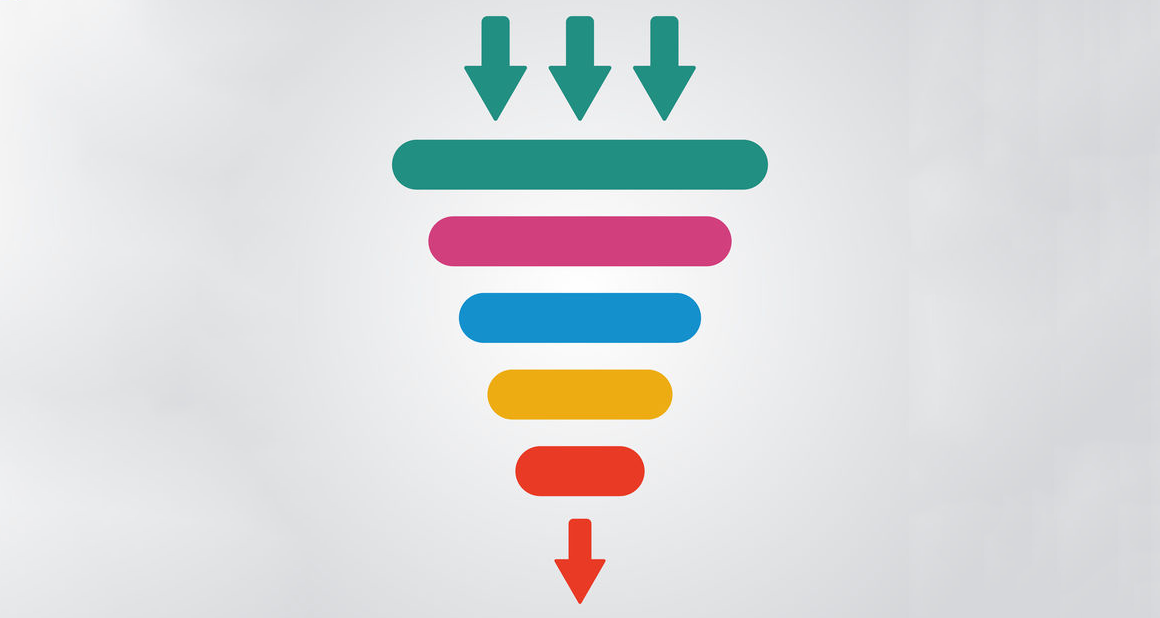Structuring Your AV Sales Funnel
 If you’ve spent any time in sales in a professional setting, you’re likely to have had your boss ask you, “What do you have lined up?”
If you’ve spent any time in sales in a professional setting, you’re likely to have had your boss ask you, “What do you have lined up?”
In some work environments, it’s an informal check-in where your boss wants to know what you’re working on, to give him an idea of upcoming project scheduling and, more importantly, cash flow. In others, it can be more structured, with sales team members delivering regular status updates to their manager on where their prospective clients stand.
Like everything, good client management follows a structure. Read enough how-to book on selling or attend enough seminars and you’ll see that sales coaches all seek to differentiate themselves by putting their own label or spin on the process. One popular analogy for managing the sales process and the one that I’ve adhered to is the sales funnel.
It paints a mental picture: Prospective deals entering your orbit and spiraling closer through the client’s decision making process (with your assistance) towards the ultimate goal: a signed deal and getting paid for it.
The AV sales funnel is a useful analogy because it’s necessary to recognize that the sales process is not always linear. Some clients take more time to close and others less. In the case of large deals, there are any number of steps along the way or outside factors that can alternately quicken or delay the final approval.
There are many ways of describing the phases a prospect passes through on the way to closing as there are sales gurus trying to sell you their book. What’s important is not so much the labels you use, but to understand that different prospects will move through the process at different rates and may or may not move through every phase or even in the same order.
You can think of the first phase as qualification. Qualifying leads accurately helps salespeople determine their needs, budget, authority and timeline.
The timeline of your prospects is especially important. Some will be ready to move forward immediately. Others will need more time, sometimes a lot more time. This is where customer relationship management (or CRM) becomes crucial: keeping track of longer term prospects and nurturing them through your sales funnel so they don’t vanish.
In the proposal phase, details will be roughed out and refined over time, often through many contacts and the final deal will begin to take shape.
Follow-up isn’t as much a phase in the AV sales funnel as it is a responsibility of the salesperson and a part of their professional process. Regardless of whether the prospect’s timeline to completion is short or long, the onus is on the salesperson to stay in contact and have a clear picture of where the prospect is in their decision making process.
The closing stage is the bottom of the funnel, where the prospect is either converted into a signed deal, or they decline, whether for reasons that are outside your control or otherwise. When deals fall through for reasons you can’t control, such as budget issues, it’s a good idea to keep track of them and maintain cordial relations, with an eye on being able to do business with them in the future.
So what’s the best way to manage the progress of your prospects through the funnel? That is best done through the use of some sort of CRM.
The advantage of using a CRM tool is that it will regiment the sales process is by helping you organize your data about your leads and prospects. From there it allows for timely and appropriate follow-up.
Which CRM you choose to use is up to you. But having it and using it effectively makes it a lot easier to have a detailed answer when your boss asks, “What do you have lined up?”





